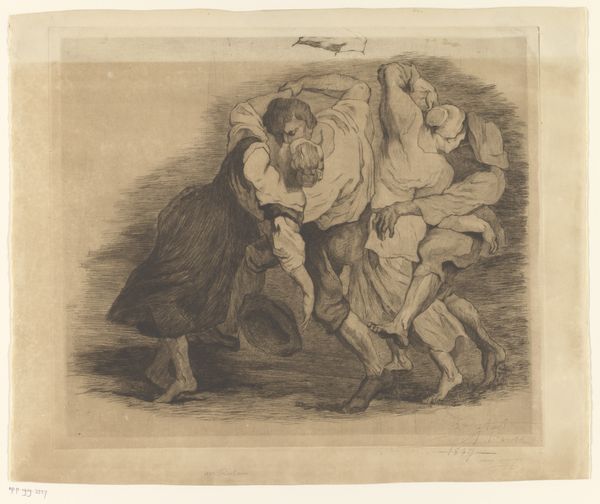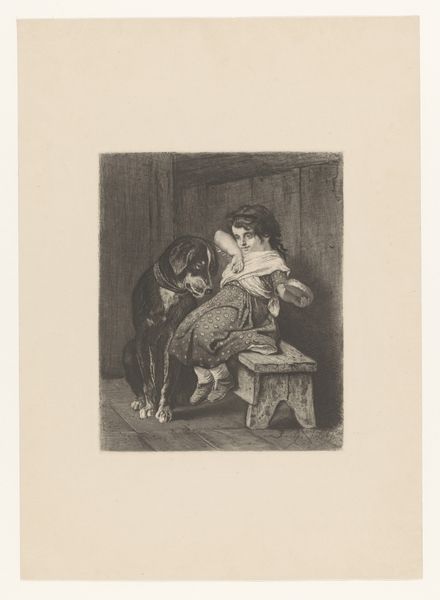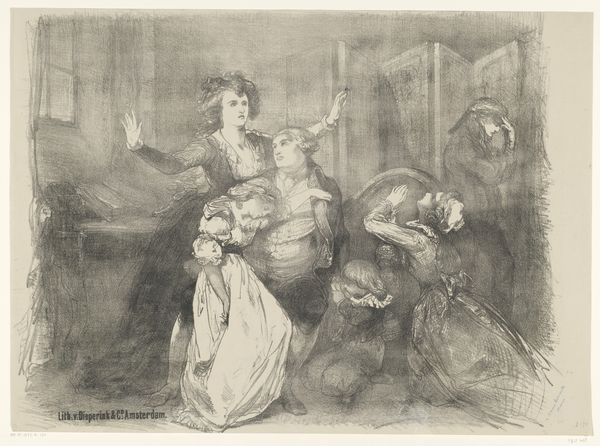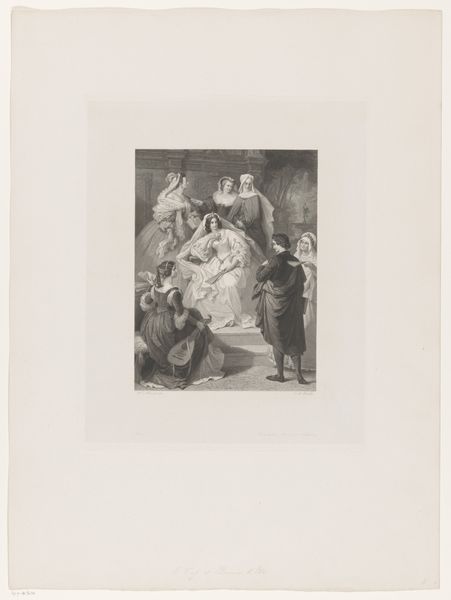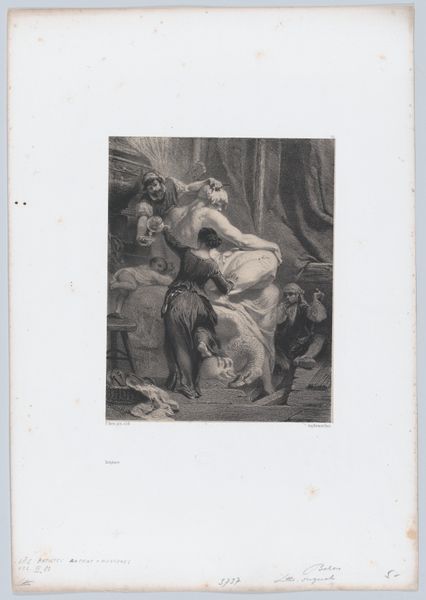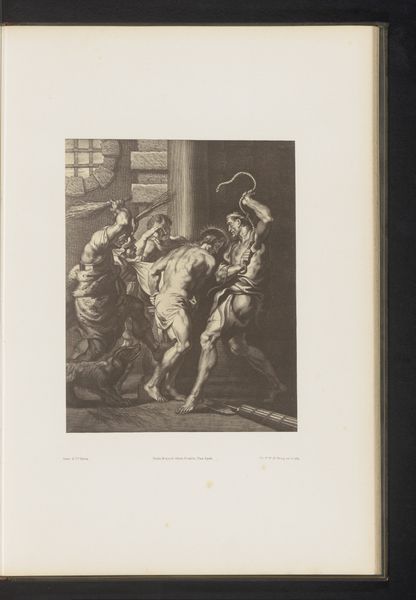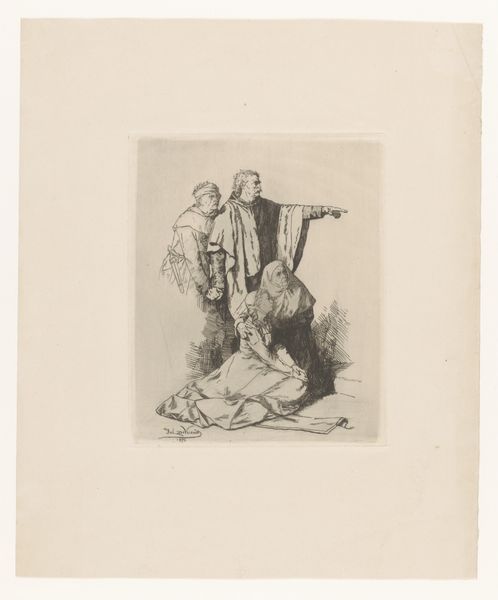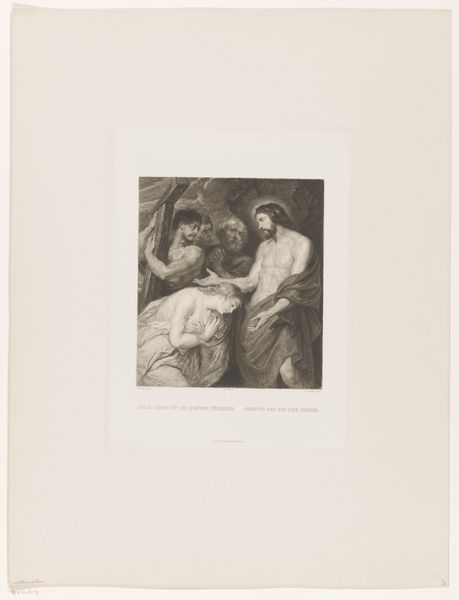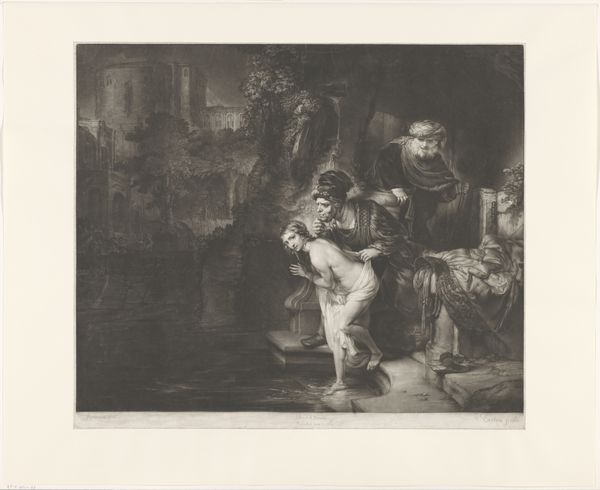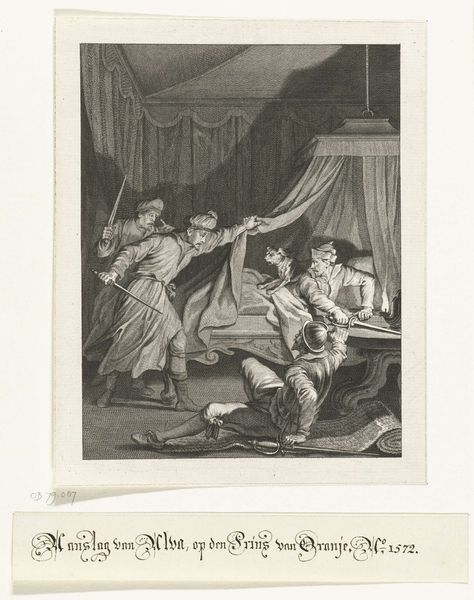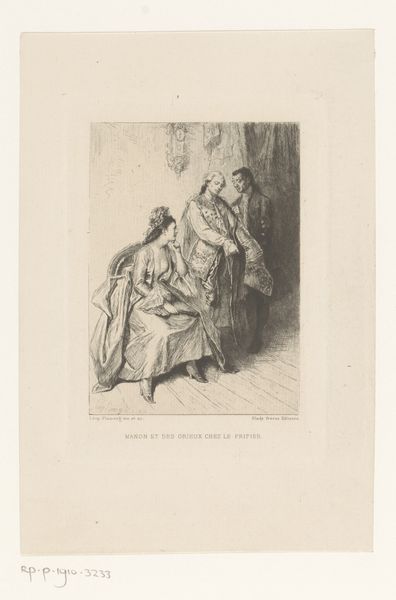
print, etching
# print
#
etching
#
figuration
#
genre-painting
Dimensions: height 354 mm, width 413 mm
Copyright: Rijks Museum: Open Domain
Auguste Danse created this etching, "Twee dansende boerenparen," a scene of dancing peasant couples, during the 19th century. Etching, an intaglio printmaking method, involves using acid to cut lines into a metal plate, which then holds ink to create an image. The material effect of the etching process is critical here. The fine lines create a sense of movement and energy, conveying the dynamic dance. See how the texture of the paper interacts with the etched lines, softening the image and adding to its atmospheric quality. The monochromatic palette directs our attention to the physical forms of the dancers. The print also speaks to the social context of its creation. Danse's choice of subject reflects the 19th-century fascination with rural life and folk culture. However, it's important to consider the labor involved in making such a print; from the preparation of the metal plate to the careful inking and printing, it's a craft process reflecting an aesthetic choice. By emphasizing materials, making, and social context, we can appreciate this print's significance beyond traditional boundaries of fine art.
Comments
No comments
Be the first to comment and join the conversation on the ultimate creative platform.
